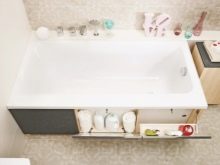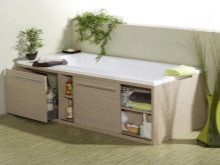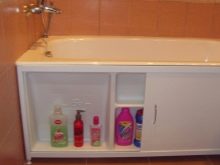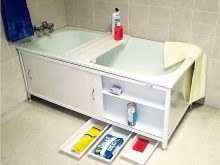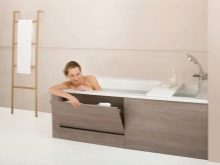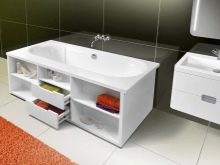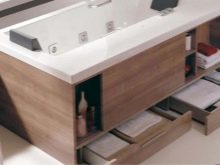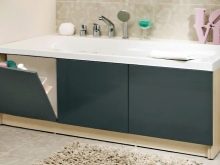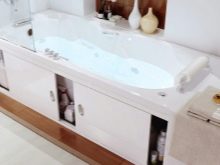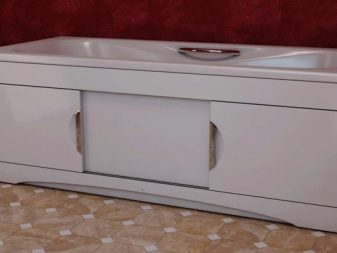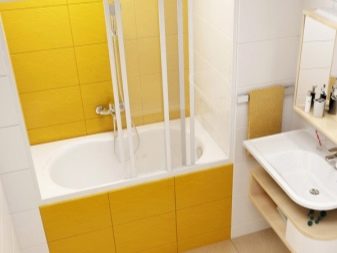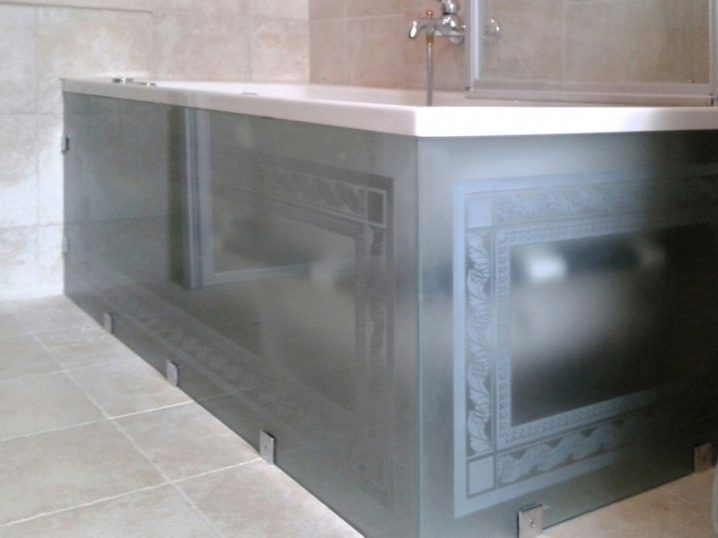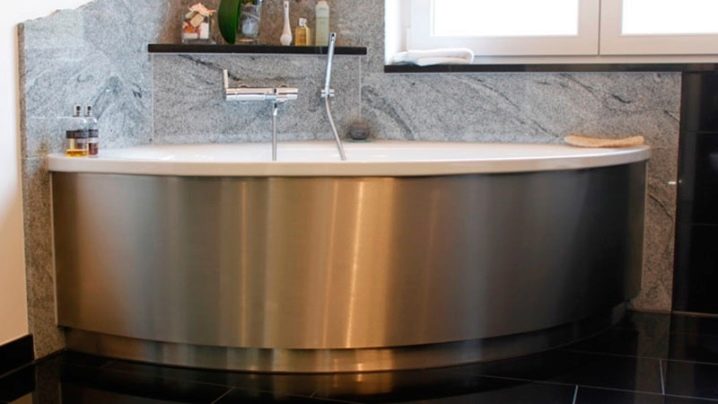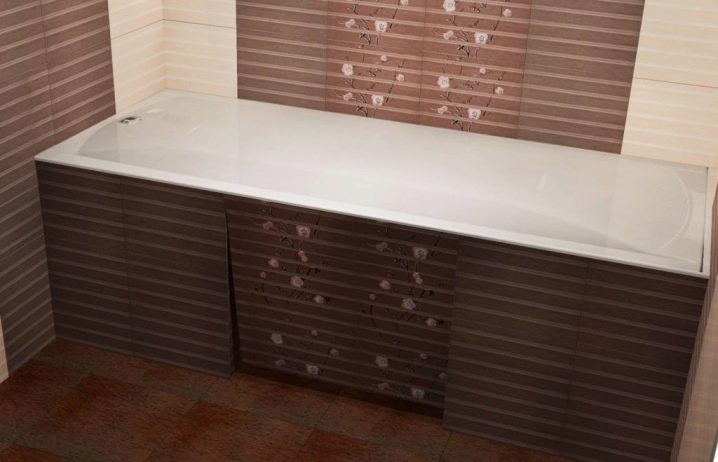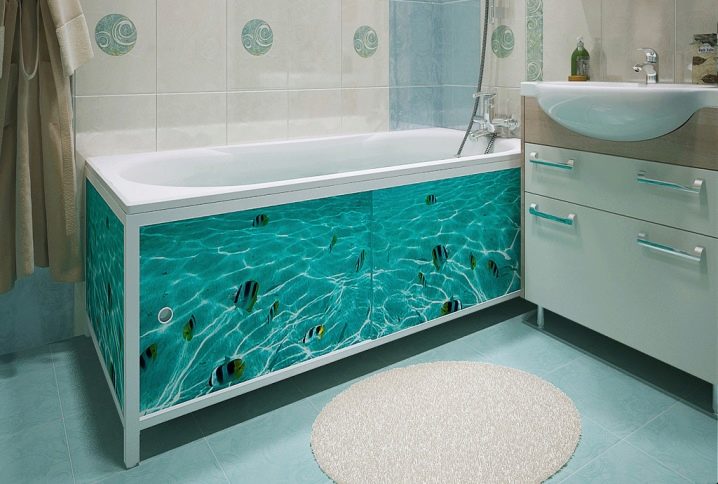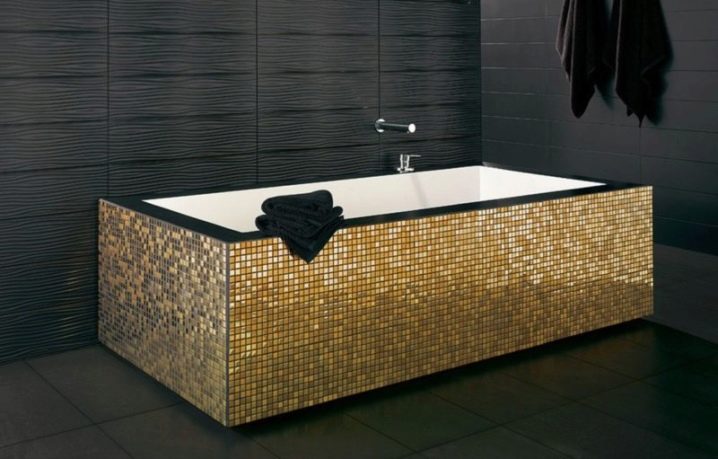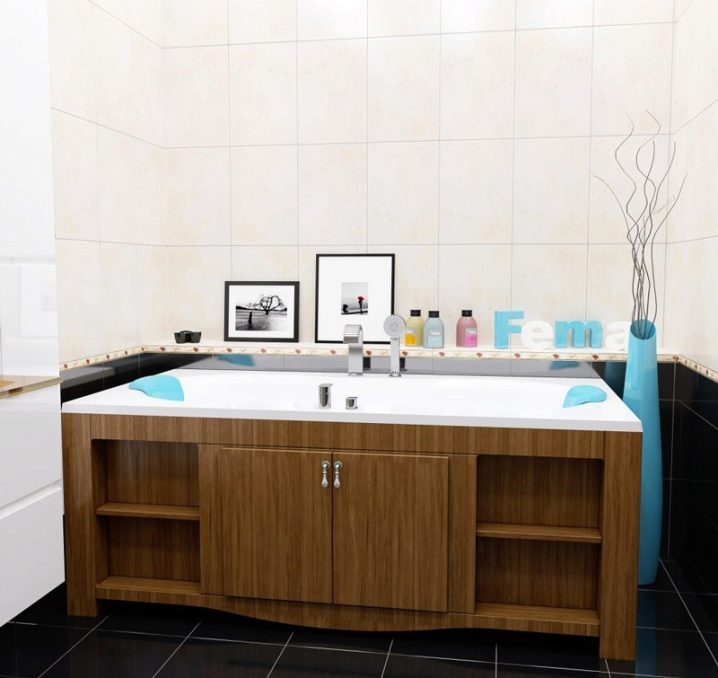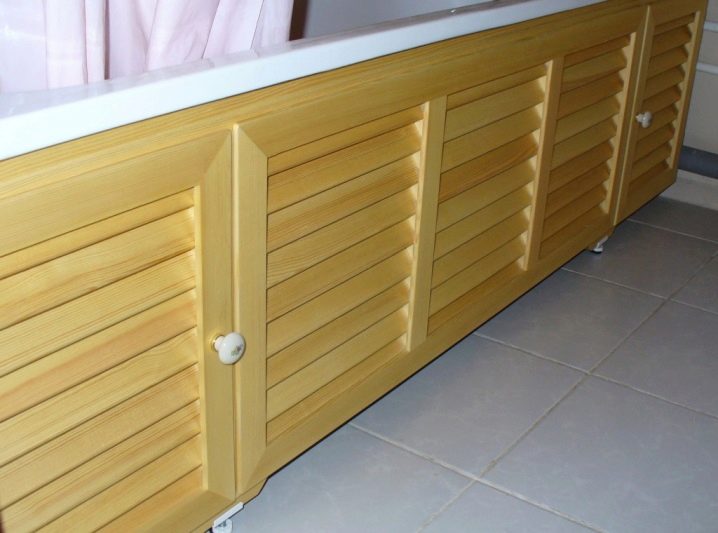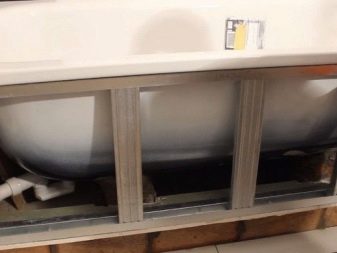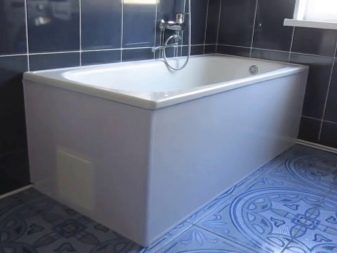Bath screens with shelves for the storage of household chemicals: design features and installation methods
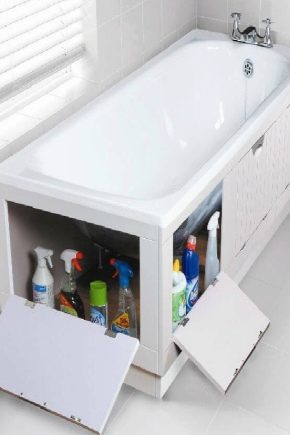
Even the most modern and fashionable bathroom design can be spoiled by the unpresentable look of the sides of the bath. In order to solve this problem, it is possible to install a screen with shelves in the bowl, which will not only close the unaesthetic part of it, but also become a place for storing household trifles. Before you begin work on creating a functional screen, you need to consider the types of structures and how to install them.
Constructive properties
A bath screen is a necessary element of the interior of small bathrooms, as it allows for more efficient use of space.Cavity structures can open both horizontally and vertically. The screen with a folding shelf which by means of the gas-lift provides silent opening enjoys huge popularity. Folding panels securely lock the door in both the closed and open position.
As a rule, household chemicals or household stuff in the form of cleaning rags, sponges and other things are stored on the shelves of the screen. Dimensions of the structure allow to accommodate even bulky packaging of detergents due to the concave shape of the bowl.
In addition to the aesthetic function, bath screens also perform a protective and utilitarian role. The protective function is to hide the plumbing from public viewing, and the utility allows you to exploit the lower space of the bowl, putting things in a special hatch.
You can install the screen around a conventional or hot tub. The technology of their installation is almost identical and does not present special difficulties - it is enough just to follow the production instructions. In addition, the installation of screens is possible for baths not only rectangular but also semicircular in shape.
Species
Screens for decorating bathrooms can be of various types:
- standard - represents the framed plastic profile imitating marble;
- multifunctional - it is a plastic profile framed with an aluminum frame, fitted with a hatch or sliding doors that allow you to hide the bottom of the bathroom;
- face - has a folding design that allows you to close only one part of the bowl.
By type of bathroom screens are divided into sliding and fixed models. The sliding type is supplied with functional doors or a groove, which is a compartment door. Fixed devices do not have moving parts, and therefore do not change their stationary position. Fixed constructions are rarely used, since they completely block access to sanitary equipment, and in case of breakage it will be necessary to dismantle the entire screen.
According to the material of manufacture emit plastic, metal, glass, ceramic and wooden screens. The simplest option is a plastic construction with a metal frame.In this case, provides high corrosion resistance for a long time.
Glass screens are notable for their special beauty and come in a variety of designs and colors. Thanks to a wide range of products, you can choose matte, clear or patterned glass. In addition, in the manufacture of screens used high-strength glass, which is not afraid of mechanical stress.
Steel or metal screens are most often selected for installation under cast iron baths, as they have high strength and are able to retain the original appearance even after several years of regular operation. The only disadvantage of steel products is the high price, which often decides the issue of their purchase.
Quite often, to protect the space under the bowl, moisture-proof MDF is used, which, even with constant contact with water, does not deteriorate or swell. But MDF-products have a small service life and are easily deformed under external influences.
Plastic designs differ in durability, ease and the low price. Plastic panels have a large selection of colors and textures. In addition, they simply mount their own hands.Significant disadvantages of the material include instability to high temperatures and fire.
Ceramic panels differ in availability and aesthetics. The screen under the bath of ceramics, as a rule, is made of plasterboard, which is covered with tiles on top. This design can be done independently, if you follow the detailed instructions.
Wooden models are practical, durable and affordable. They are easy to care for: it is enough to periodically wipe them with a damp cloth. Despite all the positive aspects of wood, it still has several disadvantages. First, the tree has a high fire risk, and secondly, it does not have too high moisture resistance.
Bath screens can be a combination of several materials. For example, there are constructions consisting of a metal bottom and a glass top.
Installation
As a bath screen, you can use a finished structure, or you can build panels with your own hands. It is much easier to mount a purchased model than an improvised one, since the process can take as little as 20-30 minutes.But the product, made by yourself, will have ideal dimensions, suitable for a particular bath. Therefore, experts prefer to install a homemade device.
Regardless of the model and material of manufacture of the screen, the installation is mounted in the following sequence:
- With the help of the level on the floor and the wall, a markup is made, which will be fixed in the future;
- Marked places along which the screen will be mounted;
- The building tape measures the necessary measurements: height measurements are taken at a minimum of three points in order to mount the device at an angle - this will facilitate the flow of fluid into the drain;
- A frame is created, for which metal profiles or wooden bars can be used (the brick screen of the frame does not require);
- All frame elements are fixed according to the markup;
- Details are cut from the selected material;
- Carved panels are mounted on the frame;
- At the end of the facing work.
To mount the screen under the acrylic bath, it is enough to produce fasteners directly on its sides. Cast iron bowl requires serious processing, otherwise you can spoil the enameled coating.
The complexity of installation depends on the complexity of the design. Installing a screen with sliding panels will require structures at the top and bottom of the guide profile. Then you will need to cut two doors having a slightly different length. And after that they need to be inserted into the guide profile and attach the handles.
To give the structure rigidity, the space between the upper part of the frame and the side of the bowl must be filled with foam. You can replace it with a building sealant, and additional vertical supports will help to strengthen the frame.
In the next video you will see how to make a screen under the bath with your own hands.
